An old saw has it that the Visual Arts Center at Bowdoin is the box in which the College’s Museum of Art arrived in. Aside from the fact that the Center is junior to the Museum by about 85 years and aside from the fact that it pits Edward Larrabee Barnes, the Center’s designer and a longtime favorite of mine, against McKim, Mead and White, the greatest powerhouse in the history of American architecture, there is still value in the expression. Excellence does sometimes arrive in objects designed for other destinies.
These musings about improbable futures are urged by the work of James Marshall, the subject of the current show at ICON Contemporary Art in Brunswick. Mr. Marshall is a sculptor and draftsman in whose work I see history and commitment to an esoteric ideal.
Before dealing with this, I’d like to return to Barnes. It is no coincidence that his Visual Arts Center is in part an homage to Charles Follen McKim. McKim’s building is glorious and while Barnes was given a different program he took the opportunity to bow toward McKim while giving the College a relentless example of Modernist architecture.
A good building can serve the world in diverse ways and, as James Marshall advises, so can a paper bag. I cannot speak on the aesthetics of paper bags other than to say that the pleasure of the certainty of its form and its functional assurance make disposing of one a reflective experience. I hate to throw one away. In their best iterations, paper bags are among the most perfectly considered objects that commerce offers us.
By this time I have probably made it clear that Mr. Marshall works principally within the harmonies of paper bags — small objects of the kind that are still used in bakeries and perhaps in hardware stores. Whatever their source to us, they are the base material from which Marshall extracts his sculpture. The wonder of this is the opportunities that the material can be induced to offer. There are perhaps as many as 15 pieces in this show, each endowed with an individual persona.
Paper allows us to select almost any level of utility we wish it to have. It is the most compliant of materials and does not resist intelligent modification. It has a private language as does, say, the Brooklyn Bridge or the Western Wall of the Temple in Jerusalem or the Pyramids at Giza. Each speaks of strength and I easily include paper among them. Like them it is a material for the ages.
It is not accurate to refer to Mr. Marshall’s work as variations on a theme suggested by a paper bag. It would be more accurate to refer to it as an example of classic geometric abstraction achieved within the limitations imposed by commercial paper bags. The use of the term “paper” ties the work to the earliest days of abstract art and the fit is surprisingly accurate. It has appeared occasionally as an ingredient over the last century or so, but rarely with the authority Marshall assigns to it. His use of the form, embellished with graphite and plaster, showing the steps of its conversion into art is remarkable. As to the latter — the conversion — enough is left of the original shape of the bag to suggest the issues faced by the artist in the process and, at the same time, to give the work its tactile appeal. It’s impossible to see his pieces and not touch them. The graphite and the fabric of the bag are not in easy alliance. They challenge each other, creating a wrinkled, fascinating union.
This is a remarkable exhibition.
OVER THE YEARS, I have seen various types of shows at the Center for Furniture Craftsmanship in Rockport. Some have been exhibitions of the work of accomplished artists, some have been multistate competitions and some have been the work of current students at the Center. Of the three, I find the third — the work of current students — the most remarkable. That a motivated person can, during a 9-month comprehensive course, produce work of such skill continues to surprise me. There is still time to see this year’s show and it is uniformly fine. I suppose the biggest surprise to me is the fact that the items are for sale. To make selections among them for a column of this sort is unfairly arbitrary, but I’ll mention those that remain in my mind.
A simple, beautifully turned cherry bowl distinguished by cutout forms along its upper edge by Chris Roy appears. It’s easy to ruin a work of this type with unnecessary embellishment. Mr. Roy avoided the trap and gave his piece a level of elegance rare to the form.
A cabinet and stand of pear, walnut and other woods by Jon Reif are a handsome example of lamination, cutout work and general furniture making. The quality of its finesse is very high. I make the same remarks about a cabinet of Swiss pear and soft maple by Mark Galipeau and add that its interior cabinetry is both elegant and shrewd. Mr. Galipeau is also represented by a walnut hall table with handsome articulated legs. A cabinet for the display of violins entitled “Duet Cabinet” by Judi Bonzi is, with its stand, a tour de force of high ambition.
There is much more to see and there are other works that you may prefer.
Philip Isaacson of Lewiston has been writing about the arts for the Maine Sunday Telegram for 48 years. He can be contacted at:
pmisaacson@isaacsonraymond.com
Send questions/comments to the editors.

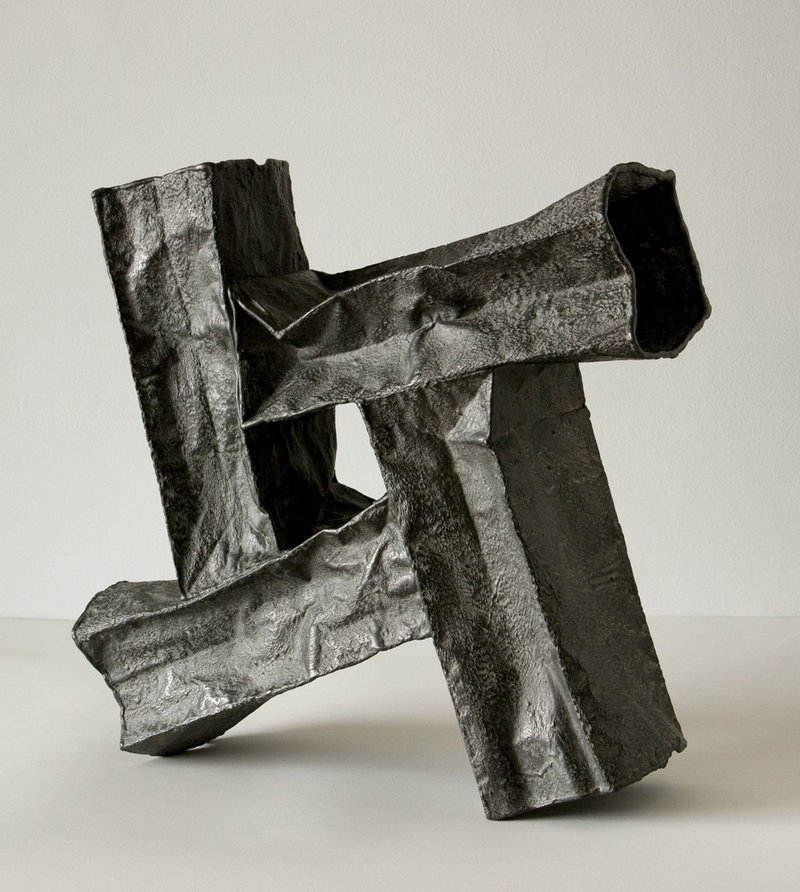
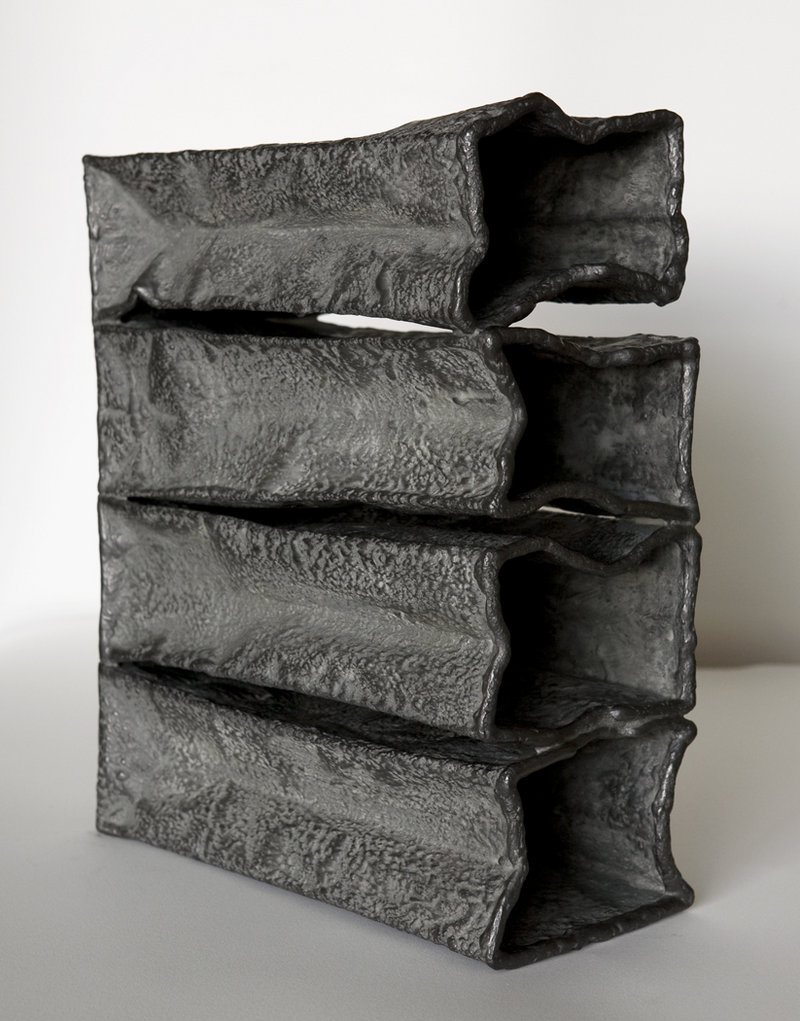
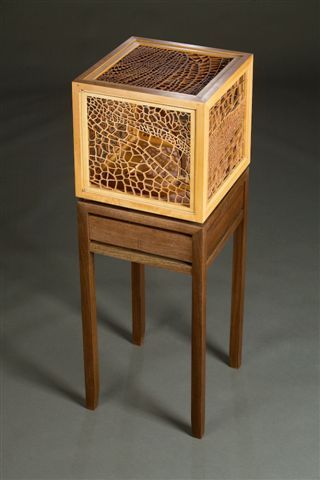
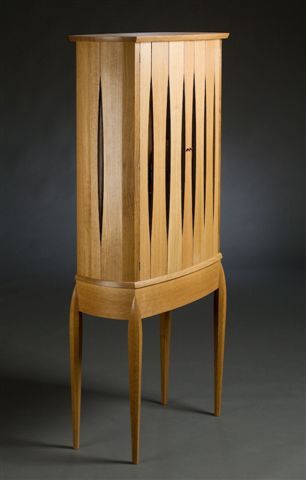
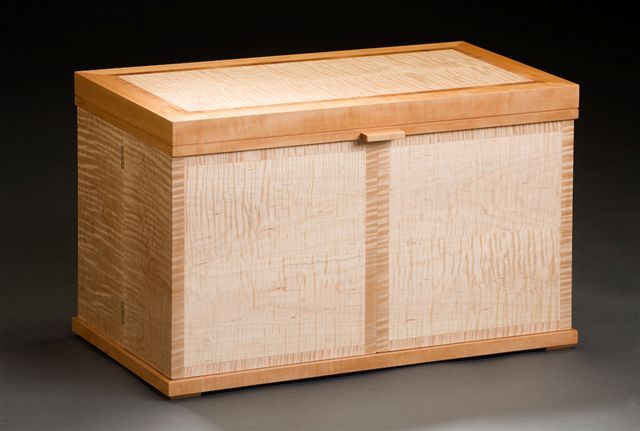

Success. Please wait for the page to reload. If the page does not reload within 5 seconds, please refresh the page.
Enter your email and password to access comments.
Hi, to comment on stories you must . This profile is in addition to your subscription and website login.
Already have a commenting profile? .
Invalid username/password.
Please check your email to confirm and complete your registration.
Only subscribers are eligible to post comments. Please subscribe or login first for digital access. Here’s why.
Use the form below to reset your password. When you've submitted your account email, we will send an email with a reset code.